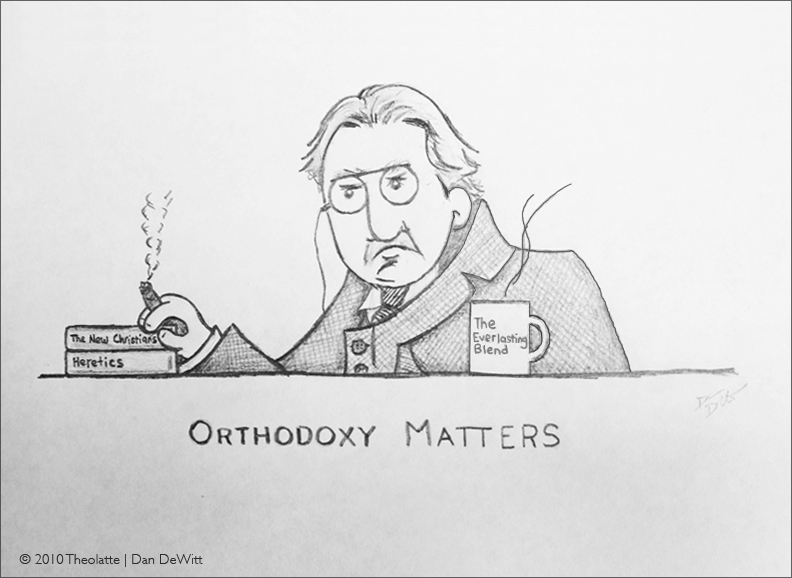How to enlarge a Circle. . .
One day, after you've lived for years in another state, you'll pull down the street of your childhood home. Only after a significant time of living away are you able to perceive, for the first time, that street so clearly. You will finally make some sense out of that street. You will make sense out of something you once never thought needed to make sense of, something you just accepted, and at once point, probably criticized and belittled.
The poet T.S. Eliot put this idea in a poem in a more efficient manner than I: "At the end of all our exploration/ We will arrive where we started/ And know the place for the first time" (Little Gidding).
Replace your childhood street with your childhood religion, and you get G.K. Chesterton's great account of the Christian faith, entitled "Orthodoxy".
I don't know much about G.K. Chesterton, other than he was a journalist in late Victorian era England and was sort of a generalist. He wrote plenty about much. I mention this book only because it is the first book I've read since I poured over Rabbi Harold Kushner's book "To life: A Celebration of Jewish Being and Thinking" that stopped me dead in my tracks nearly every page. Most fundamentally, Chesterton thinks that the modern world's maxim- "believe in yourself"- is a recipe for madness. He also prods readers to not worship at the altar of reason and logic, but prefers images, poems, and abstract ideas as the preferred avenues to pursue truth through.
Chesterton claims that it is the mathematician, the engineer, the cashier, that goes mad, not the poet. In effect, Chesterton uses these occupations as symbols of how one can choose to view the world. Of course, their could be a poetic engineer and a mathematical poet. Here, the poet symbolizes the spiritually alive individual while the cashier or mathematician is the one who seeks to quantify the world into logical categories that are ultimately spiritually empty. The cashier or mathematician represents those that believe in mankind, not God.
Chesterton claims that "poetry is sane because it floats easily in an infinite sea, while reason seeks to cross the infinite sea and make it finite. The result is mental exhaustion.. . to accept everything is an exercise, to understand everything a strain. The poet only desires exhalation and expansion, a world to stretch himself in. The poet only asks to get their head in the heavens. The logician seeks to get the heavens into his head. And it is his head that splits. . .".
Chesterton goes on to argue that those who are religious are poets, and understand more about human life that those that seek to scientifically quantify it.
Another way to understand this idea? Circles.
Think of a circle as representing one's thoughts, one's being. Of course a very small circle and a large circle are both still circles, both are equally infinite. However, if one has materialistic concerns, worldly concerns, one will have a life with a small circle, while a spiritually aware individual will have a large circle. The comparison here is like a green pea vs the size of the earth. Both can be circles, and one could travel around them forever, but one is certainly more vast and fascinating that the other.
The world, the one that tells us that science explains everything, that tells us that logic is the be all end all, the one that tells us to selfishly believe in ourselves in pursuit of earthly treasures, well, it does explain a lot. As Chesterton put it, though, the world "explains a large number of things, but it does not explain them in a large way. . .".
After I read that, I thought that I really shouldn't want more than I need. . .

Interesting thoughts on this topic. I wonder if some of your comments represent why I find so much fascination with the concentric circles graphic in developing personal profiles of students. There is an infinite set of possibilities for how the circle can be used in this fashion. Good food for thought.
ReplyDeleteI actually mapped out some blog ideas based on the concentric circles presented in class! They certainly have many uses. I'm looking forward to using them more during the '17-'18 school year.
ReplyDelete